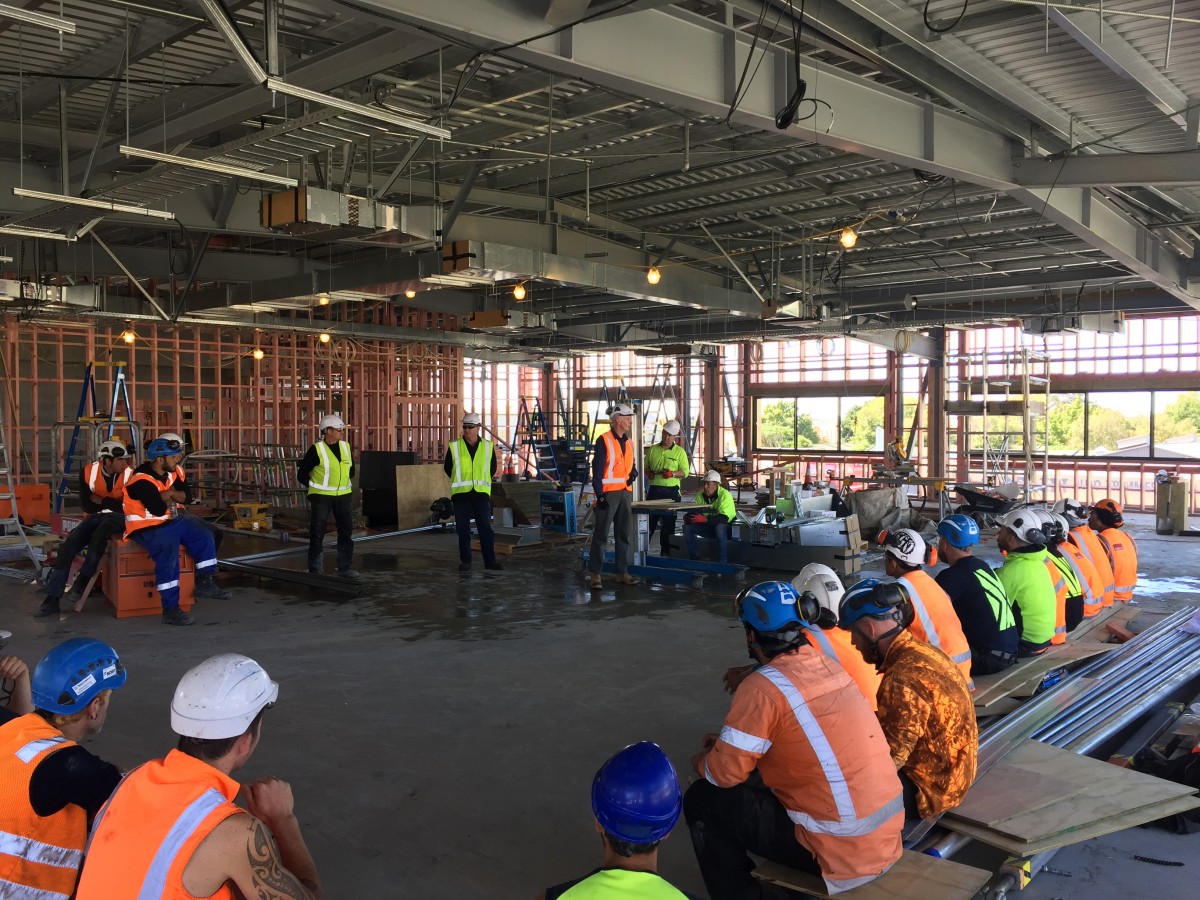Time to talk about safety
10 Aug 2018, Prove Your Know How, Safety

Worker engagement and participation is a big focus in the Health and Safety at Work Act. In a nutshell, it’s about talking with your team and having meaningful discussions about your health and safety policies. Here are some tips to help you get on top of worker engagement and participation
The Health and Safety at Work Act asks those in charge of a workplace to carry out worker engagement and participation with their team. If you’re an employer, or what the Act calls a Person Conducting a Business or Undertaking (PCBU), you are expected to:
- Share information.
- Give workers the opportunity to share their views and contribute to decision making.
- Advise workers of any outcomes and decisions you have made.
Participation is a way that workers can raise any concerns they have about health and safety and suggest improvements. It’s also an effective way to involve them in the decision-making process. When working well, participation means:
- Workers know how to participate and report issues to the PCBU.
- Workers have the opportunity to raise issues or suggestions.
- The PCBU considers and responds to workers quickly.
Why is it important?
Worker engagement and participation helps you build a good health and safety culture. This ultimately leads to increased productivity, less down time, and means you don’t need to worry about finding a replacement if someone gets hurt.
If you get workers involved, they can often come up with the best solutions, as they are the ones carrying out the job every day. In addition, if they have helped with the process, they will be more involved and engaged at work. This often means they will work harder and turn out better work for the team.
What must workplaces do?
How a business engages in participation depends on the size of the organisation and the type of work it carries out.
However, the law is clear – a PCBU must regularly engage with workers in a deliberate and planned way. This means that it is good to have formal channels for your workers to make a contribution, in addition to the informal ways that many businesses offer. Some potential ways include:
- Health and safety reps.
- Health and safety committees.
- Inform workers of the outcome of incidents that they have reported in a timely fashion. People are more likely to get involved in health and safety if they can see that you value it and are acting on their feedback.
- Staff intranet or noticeboard.
- Allow workers to raise issues in person with the manager.
- Toolbox talks/pre-start meetings. Include a toolbox talk as part of your regular prestart meeting. These provide an opportunity to give positive feedback for safe actions, hard work and initiatives. The meeting shouldn’t be a lecture, but a chance for engagement with the team.
- Create a suggestions box as a convenient way for workers to suggest health and safety improvements.
- Staff surveys.
- Workplace inspection.
- Include health and safety as a regular agenda item during team meeting.
- Reward good reporting by encouraging workers to report safe actions, incidents and observations by providing recognition such as a prize or work shout.
For more information about toolbox talks, check out Site Safe’s Practical Safety Advice pages for ideas. There’s also a toolbox talk minutes template that Site Safe members can download for free.
Want more? Check out Site Safe’s Leadership in Safety course, which is designed to help you engage with workers and contractors on site. Visit www.sitesafe.org for more information.
Site Safe is a not-for-profit, membership-based organisation that promotes, inspires and supports a culture of health and safety in New Zealand construction.
Register to earn LBP Points Sign in
3 Comments
Leave a Reply
You must be logged in to post a comment.




Comman sense
Ha..ha
done